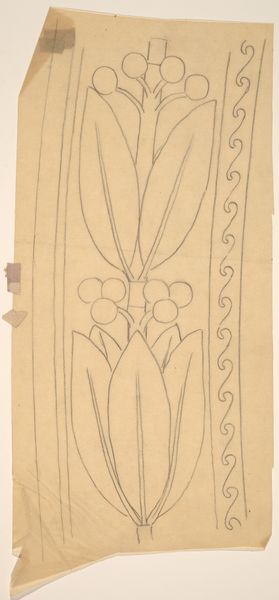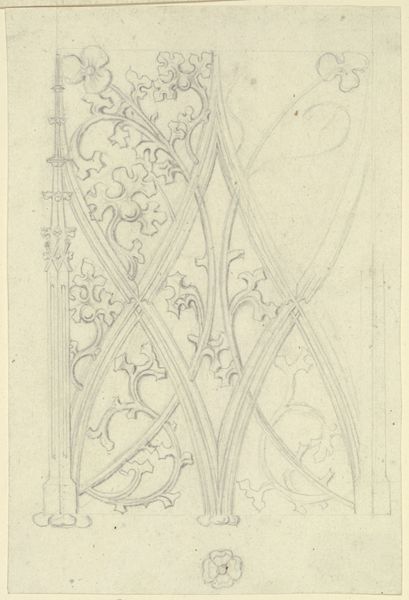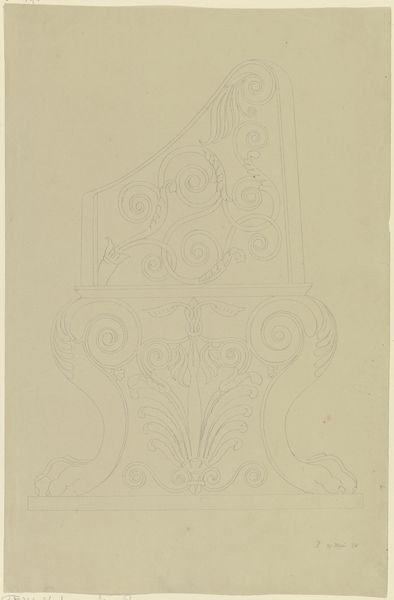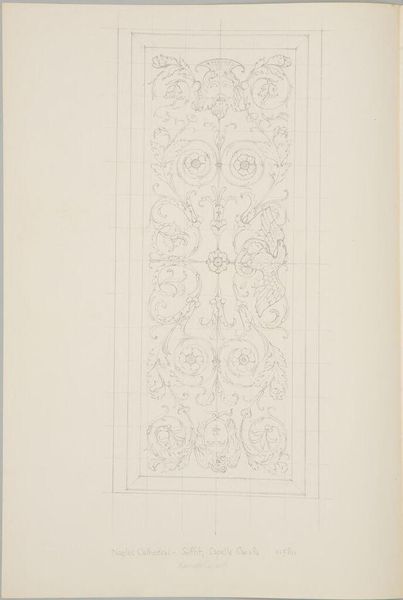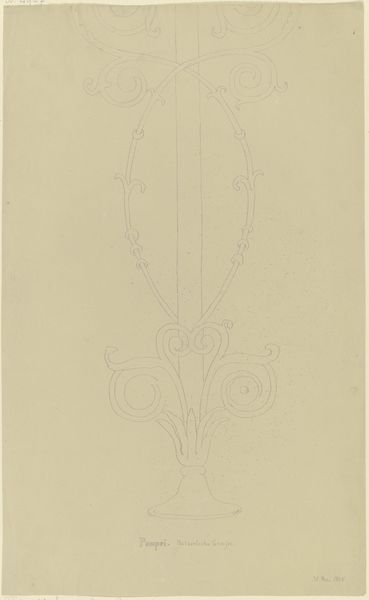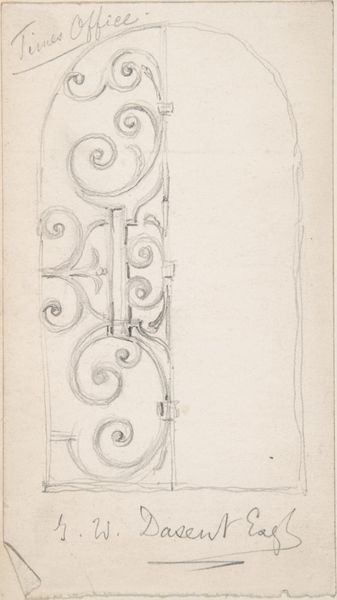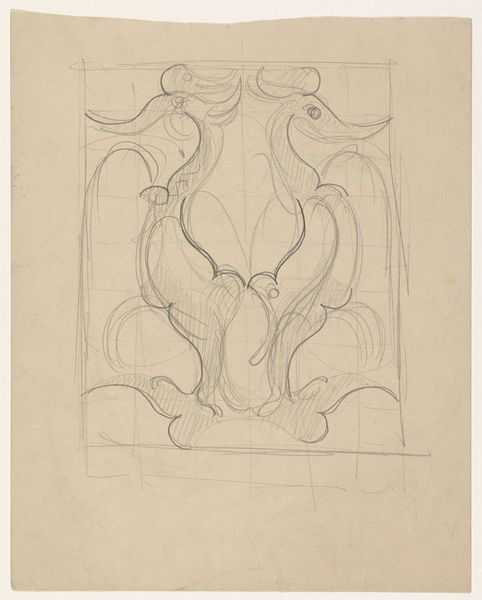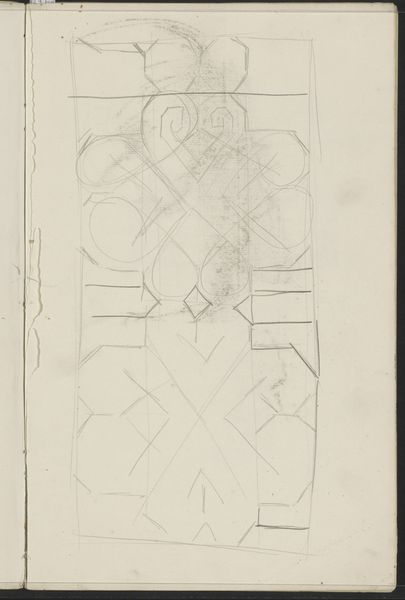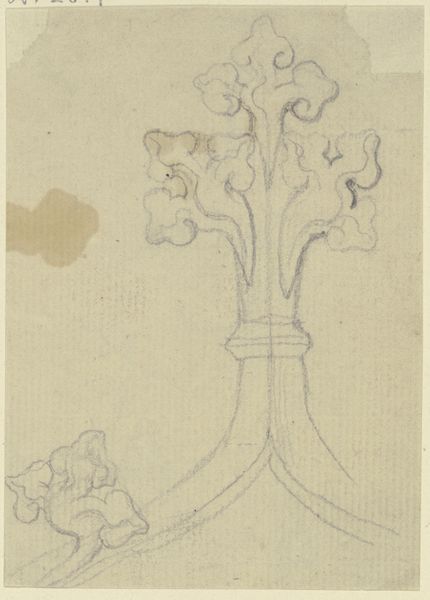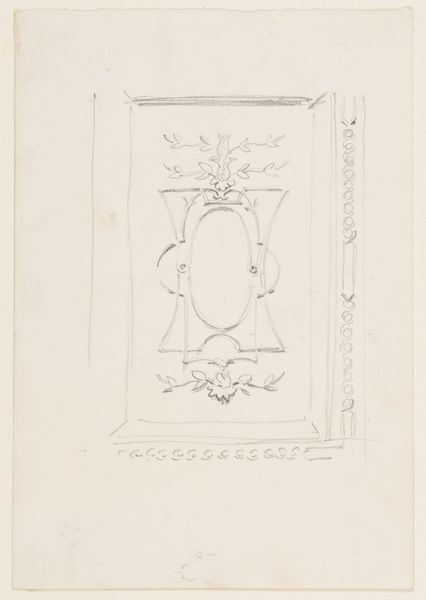
drawing, pencil
#
drawing
#
art-nouveau
#
geometric
#
pencil
#
line
Dimensions: sheet: 46.9 × 29.53 cm (18 7/16 × 11 5/8 in.)
Copyright: National Gallery of Art: CC0 1.0
Editor: We’re looking at “Study for a Border Design,” created by Charles Sprague Pearce between 1890 and 1897. It's a pencil drawing, and it strikes me as quite balanced, with its geometric and floral elements. The precision is also really compelling. What compositional strategies can we unpack here? Curator: The rhythmic repetition is undeniably effective. Notice the mirroring of the foliate forms, both above and below a central horizontal axis. This bilateral symmetry lends a sense of classical order. Editor: Yes, I see that. It is very soothing to the eye, which perhaps explains why he might have used it in this way. But what’s the significance, if any, of that geometric framework around the central pattern? Curator: Consider it as an attempt to impose structure upon the organic. The lines provide a scaffolding, a way of containing the natural forms. The very use of the line in drawing flattens out depth for two-dimensionality, it gives it graphic definition. Does this affect how you perceive the pattern? Editor: It does. The containment gives it a sense of almost scientific detachment. It looks less decorative somehow and more like a study of forms as the title suggests. What do you make of the other pencil leaves on the margin? Curator: It underscores the inherent dichotomy – between constraint and fluidity – explored by the drawing. The border motif contains a very controlled depiction, and the spare leaf on the left is freed of structuralist implications, a kind of contrasting and "pure" nature. Editor: That contrast makes the actual planned design pop out more. I never thought about seeing that contrast. Thank you! Curator: It is the interaction of form and intent that defines much of the design's strength.
Comments
No comments
Be the first to comment and join the conversation on the ultimate creative platform.
